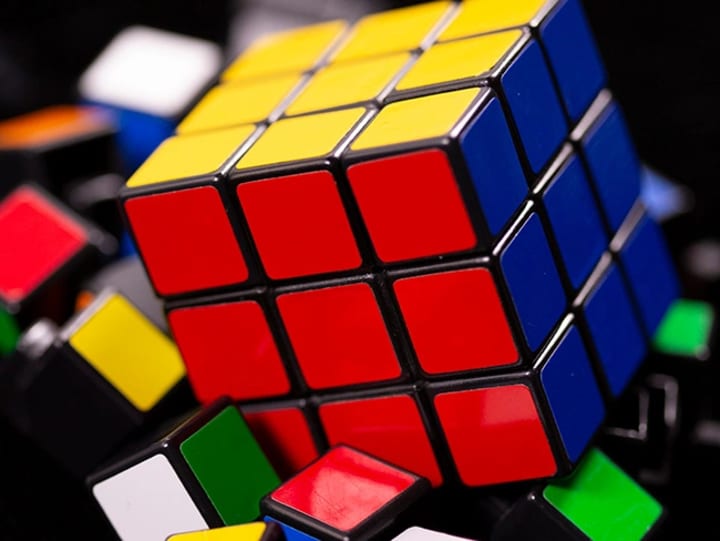How to Solve a Rubix Cube
Learn the tricks of solving a Rubix cube.

When I first came into contact with the Rubix cube, it took me almost a day before I would align all the colors in their respective faces. Now, can you imagine my shock when I saw someone do that in less than 5 minutes. Trust me I had never considered myslef as dumb as I did then only to later realize that there are algorithms that if followed you could solve the puzzle in 3 minutes or less.
The first step in solving a Rubik's cube is to complete the first layer, which involves making one side of the cube all one color. This can be done by matching up the colored stickers on the cube's sides to create a solid color on one face. This can be done in a few different ways, but one common method is to start with the white face and use the adjacent sides to create a cross pattern, then solve the corners and edges to complete the first layer.
Once the first layer is complete, the next step is to complete the second layer, which involves placing the edges of the second layer in their proper place, making sure the colors match up with the adjacent sides. This can be done by using a combination of twists and turns to move the edges into the correct positions. When placing the edges, it's important to consider the orientation of the colors so that they match up with the adjacent sides.
The next step is to permute the corners of the top layer, which involves moving the corners of the top layer to their proper positions, without disturbing the rest of the cube. This can be done by using a series of twists and turns to move the corners into the correct position. To do this, it's important to consider the orientation of the colors so that they match up with the adjacent sides.
Once the corners of the top layer are in their proper position, the next step is to orient the top layer corners, which involves rotating the top layer corners to match the colors of their adjacent sides. This can be done by using a series of twists and turns to rotate the corners into the correct position. To do this, it's important to consider the orientation of the colors so that they match up with the adjacent sides.
Once the corners and edges of the top layer are in their proper positions, the Rubik's cube is considered to be solved. To optimize your solving time, it's important to practice the techniques and algorithms regularly and find what works best for you. With practice, you can learn to solve the Rubik's cube in a matter of minutes!

Another common algorithm for solving a Rubik's cube is the Fridrich method. The Fridrich method is a speedcubing method that uses algorithms to solve the cube as quickly as possible. It is considered one of the most efficient methods and is widely used by speedcubers.
The Fridrich method consists of the following steps:
- Cross: Solve the white cross on the U face.
- F2L: Solve the First Two Layers (F2L) by pairing up two pieces (one edge and one corner) and inserting them into the correct position.
- OLL: Orient all the last layer (OLL) corners and edges to match their respective colors.
- PLL: Permute the last layer (PLL) to get all the pieces in their proper position.
The Fridrich method uses a variety of algorithms, including edge pairing algorithms, corner-edge pairing algorithms, orientation algorithms, and permutation algorithms, to solve the cube as efficiently as possible. The method is considered to be the most efficient because it solves the cube in a way that minimizes the number of moves needed to complete the solve.
Overall, the Fridrich method is a highly effective and efficient method for solving a Rubik's cube and is widely used by speedcubers. If you're interested in learning more about the Fridrich method, there are many resources available online, including tutorials and videos, that can help you get started.
About the Creator
Nelis Thuo
Welcome to my world of words! I am a lover of all things literature and storytelling. Join me on my journey as I explore the depths of the human experience and uncover the beauty in the everyday.






Comments
There are no comments for this story
Be the first to respond and start the conversation.